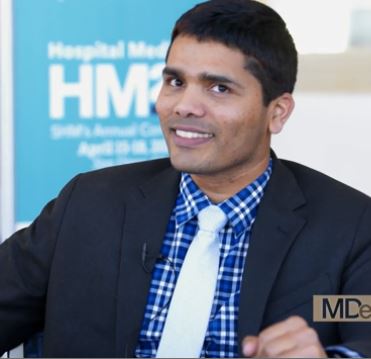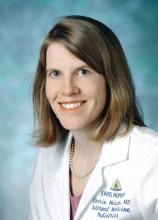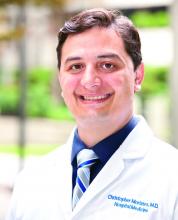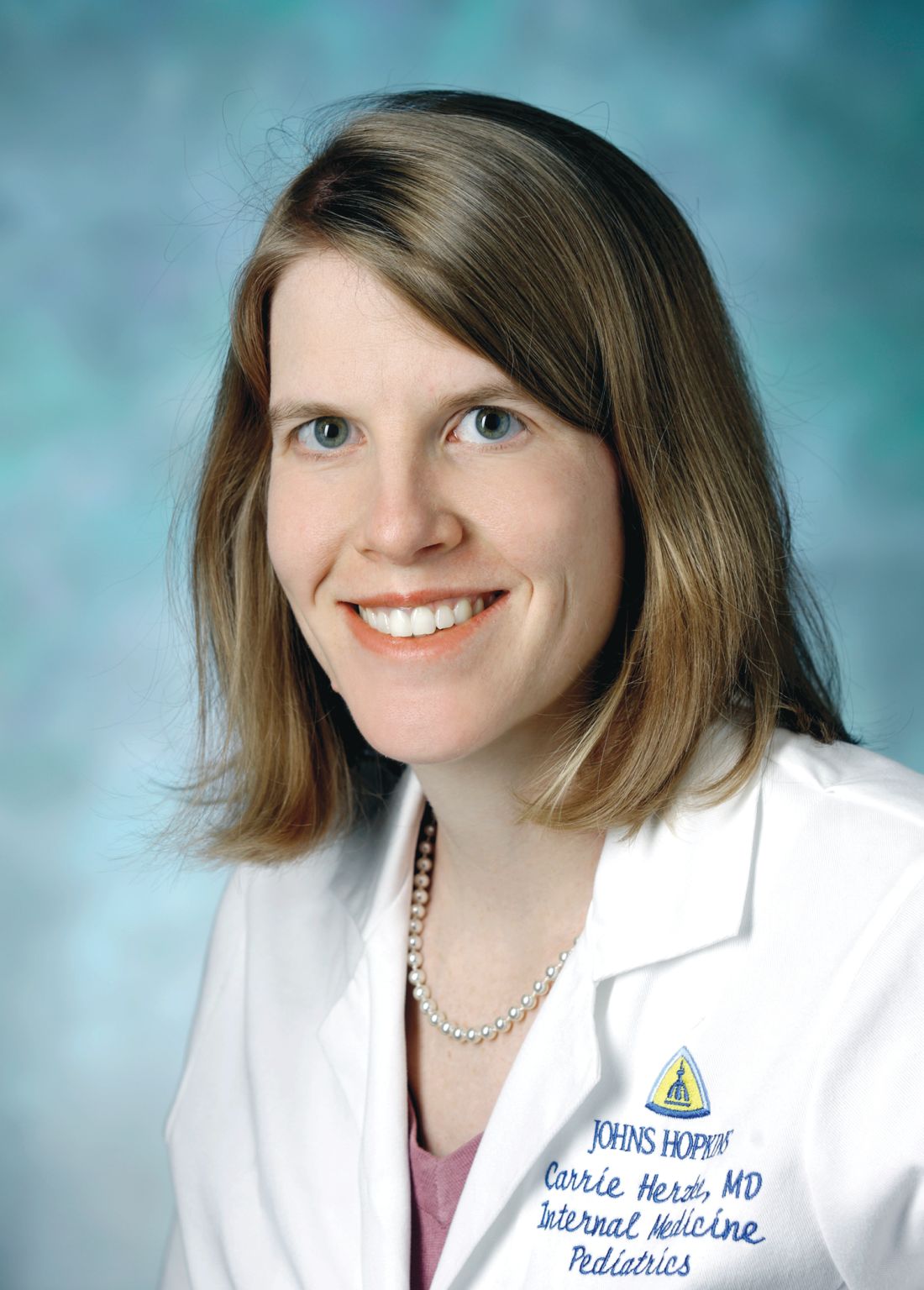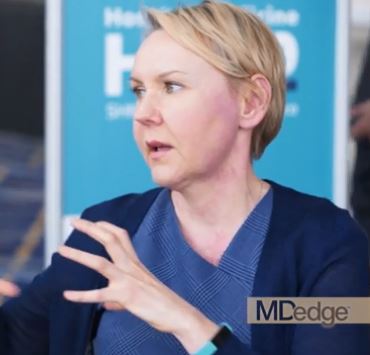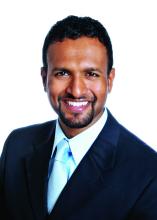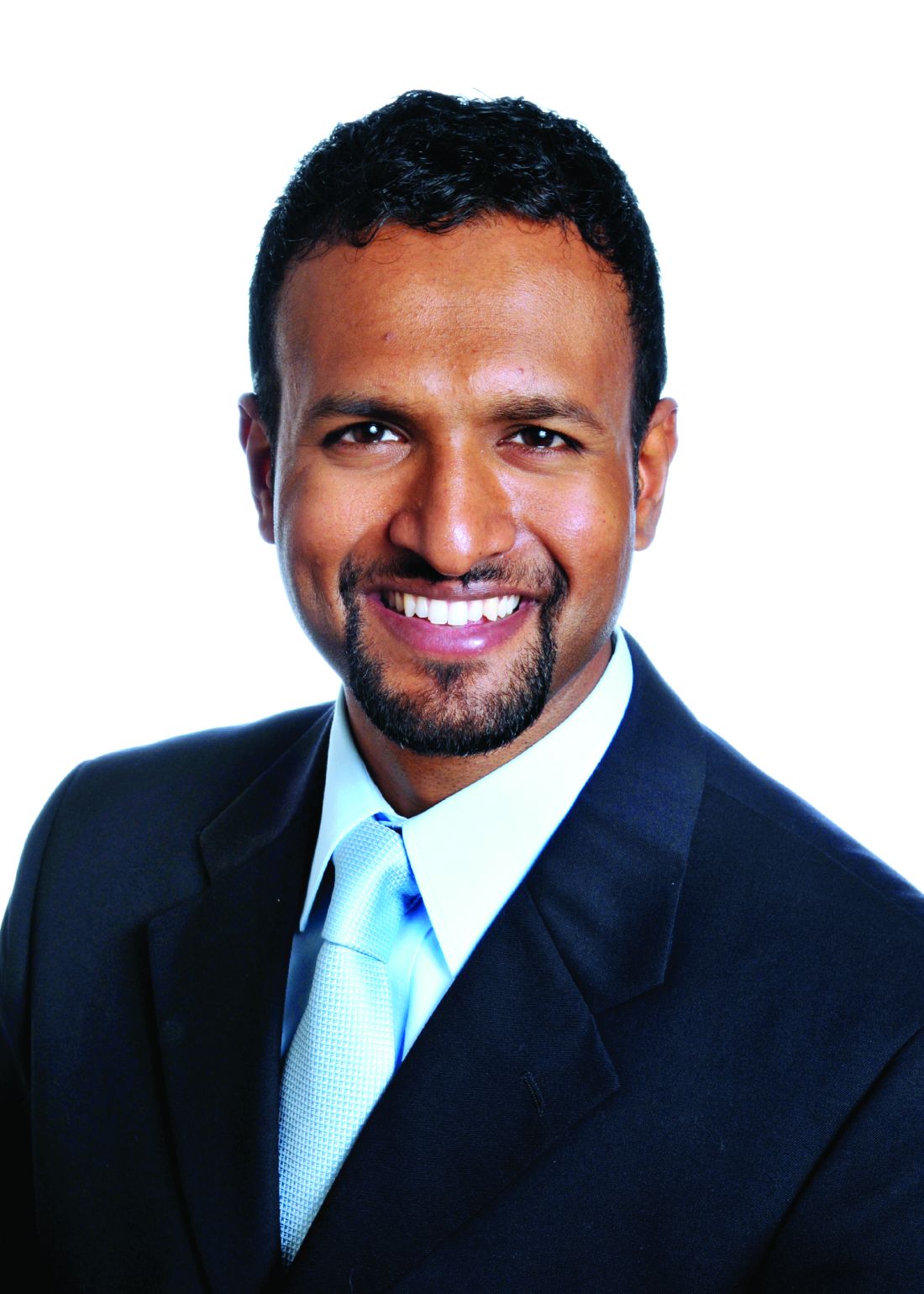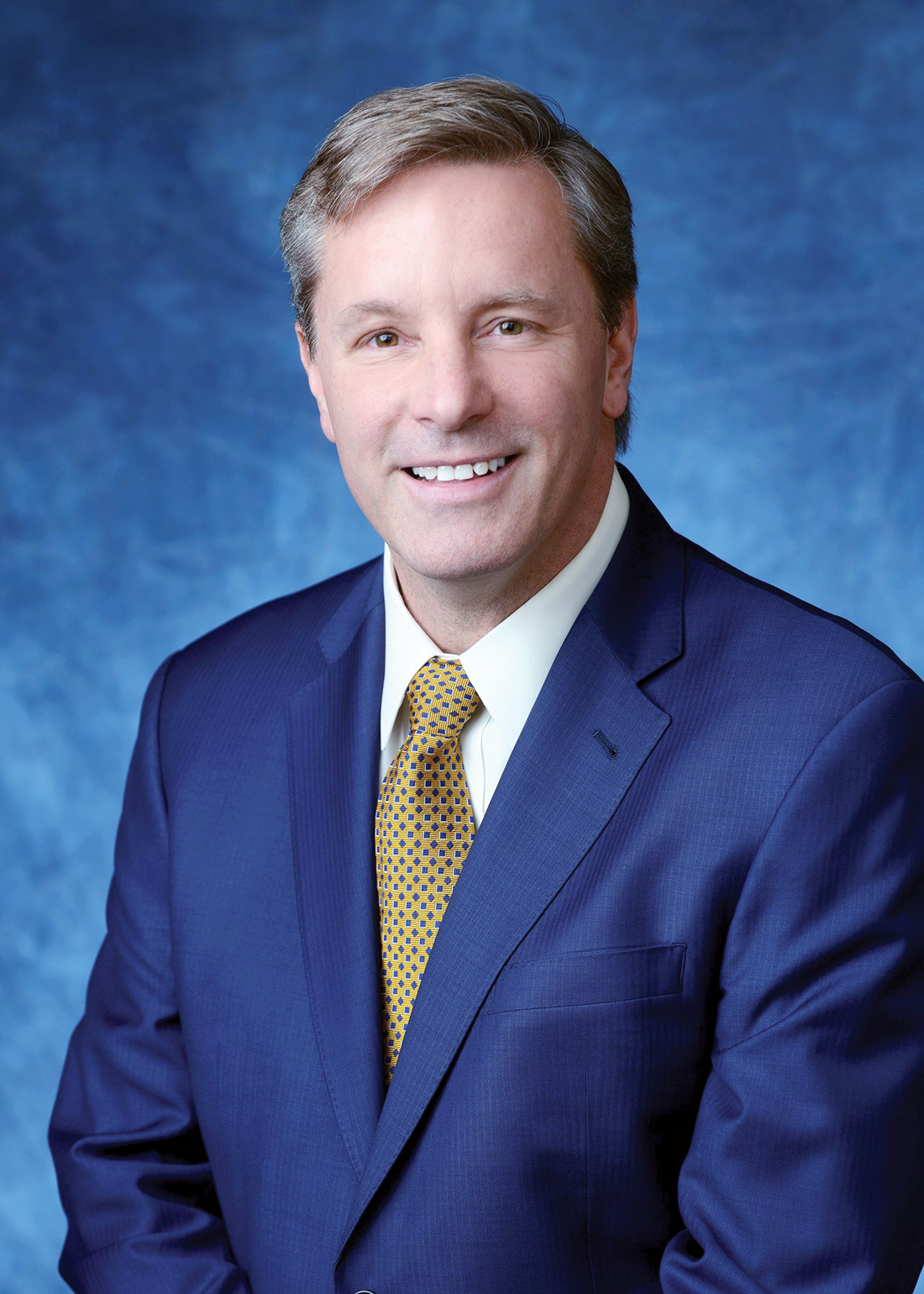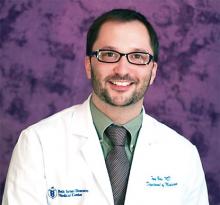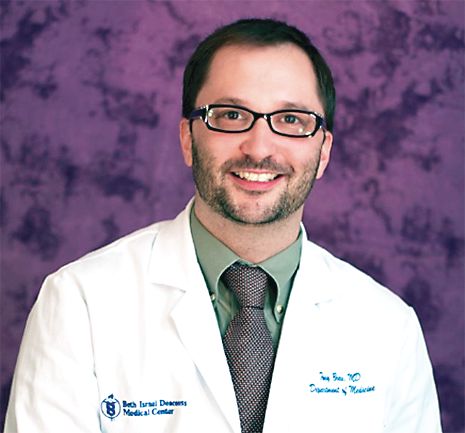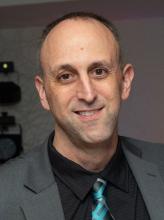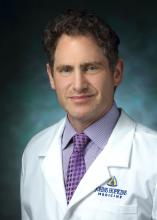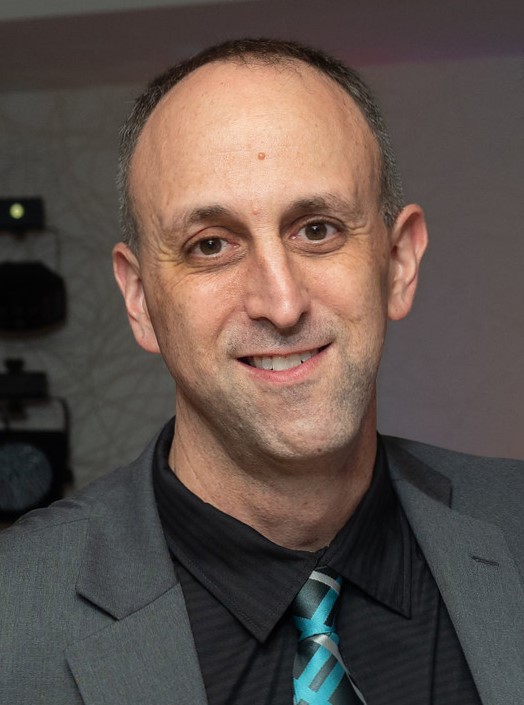User login
HM19: Lessons from the Update in Hospital Medicine session

In the second of two episodes, Amith Skandhan, MD, FHM, of Southeast Alabama Medical Center, Dothan, Ala., and Raman Palabindala, MD, SFHM, of the University of Mississippi Medical Center, Jackson, Miss., discuss more of their favorite lessons from the annual meeting of the Society of Hospital Medicine. Dr. Skandhan and Dr. Palabindala share practice-changing takeaways from the Update in Hospital Medicine session.

In the second of two episodes, Amith Skandhan, MD, FHM, of Southeast Alabama Medical Center, Dothan, Ala., and Raman Palabindala, MD, SFHM, of the University of Mississippi Medical Center, Jackson, Miss., discuss more of their favorite lessons from the annual meeting of the Society of Hospital Medicine. Dr. Skandhan and Dr. Palabindala share practice-changing takeaways from the Update in Hospital Medicine session.

In the second of two episodes, Amith Skandhan, MD, FHM, of Southeast Alabama Medical Center, Dothan, Ala., and Raman Palabindala, MD, SFHM, of the University of Mississippi Medical Center, Jackson, Miss., discuss more of their favorite lessons from the annual meeting of the Society of Hospital Medicine. Dr. Skandhan and Dr. Palabindala share practice-changing takeaways from the Update in Hospital Medicine session.
REPORTING FROM HM19
HM19: Key takeaways on quality and innovation

In the first of two episodes, Amith Skandhan, MD, FHM, of Southeast Alabama Medical Center, Dothan, Ala., and Raman Palabindala, MD, SFHM, of the University of Mississippi Medical Center, Jackson, Miss., discuss their favorite lessons from the annual meeting of the Society of Hospital Medicine. Dr. Skandhan and Dr. Palabindala review key points from sessions on quality and patient safety, caring for the complex medically ill, using data analytics to drive clinical change, and the best studies from the Research and Innovation poster competition.

In the first of two episodes, Amith Skandhan, MD, FHM, of Southeast Alabama Medical Center, Dothan, Ala., and Raman Palabindala, MD, SFHM, of the University of Mississippi Medical Center, Jackson, Miss., discuss their favorite lessons from the annual meeting of the Society of Hospital Medicine. Dr. Skandhan and Dr. Palabindala review key points from sessions on quality and patient safety, caring for the complex medically ill, using data analytics to drive clinical change, and the best studies from the Research and Innovation poster competition.

In the first of two episodes, Amith Skandhan, MD, FHM, of Southeast Alabama Medical Center, Dothan, Ala., and Raman Palabindala, MD, SFHM, of the University of Mississippi Medical Center, Jackson, Miss., discuss their favorite lessons from the annual meeting of the Society of Hospital Medicine. Dr. Skandhan and Dr. Palabindala review key points from sessions on quality and patient safety, caring for the complex medically ill, using data analytics to drive clinical change, and the best studies from the Research and Innovation poster competition.
REPORTING FROM HM19
‘Update in Hospital Medicine’ offered practice pearls at HM19
Studies that question common practices
On the big stage at HM19 in late March, Carrie Herzke, MD, FAAP, FACP, SFHM, and Christopher Moriates, MD, FACP, SFHM, undertook the daunting task of summarizing a year’s worth of research relevant to the practice of hospital medicine – all within the span of an hour.
As has been standard with the “Update in Hospital Medicine” session at previous SHM Annual Conferences, the presenters touched on lighter topics in the medical literature: a prospective cohort study that found drinking coffee was inversely associated with mortality, even for those who drink up to eight cups a day; a cross-sectional observational study in which patients noted that what a physician wears is an important consideration for them during care, with a white coat preferred over formal attire as the most highly rated preference in a clinical care setting; and a study from a pediatric journal in which researchers calculated the average transit time for a Lego figurine head ingested by an adult.
But Dr. Herzke and Dr. Moriates mainly covered more serious subjects. In an interview before the session, Dr. Herzke, associate vice chair for clinical affairs in the department of medicine at Johns Hopkins Medicine in Baltimore, said she and Dr. Moriates chose studies across the fields of infectious diseases, cardiology, and hematology that should make hospitalists question common practices and consider changing how they practice medicine at their home institution.
Dr. Moriates, assistant dean for health care value at the University of Texas at Austin, said in an interview that their topic choices reflected the breadth and diversity of patients taken care of by hospitalists.
For example, he noted during the HM19 session that results from several studies suggest hospitalists may soon choose oral antibiotics over IV antibiotics for care of certain patient populations: the recent POET trial suggests use of oral antibiotics for patients with left-sided infective endocarditis resulted in a lower length of stay in hospital (19 inpatient days) when compared with use of IV antibiotics (3 inpatient days and 17 additional treatment days post discharge), while the OVIVA trial found a lower but noninferior treatment failure rate among patients who received oral antibiotics for bone and joint infection, compared with IV antibiotics. Although these were both well-done studies, Dr. Moriates and Dr. Herzke emphasized that the results challenge widely accepted standards of care, and it may not yet be time for a paradigm shift.
Direct oral anticoagulants (DOACs) also are being studied in patients with end-stage renal disease (ESRD) and cancer, Dr. Herzke said, and apixaban (Eliquis) 5 mg appears to be the preferred dose for a lower risk of stroke and mortality in patients with ESRD and atrial fibrillation. The speakers said there are further studies being developed for management of AF in patients with heart failure and DOACs for patients with ESRD.
Another retrospective cohort study from research in the Massachusetts Public Health Dataset found that buprenorphine may have a number needed to treat of 50 for opioid use disorder, which Dr. Moriates said is close in proximity for the number needed to treat for aspirin. “It seems like it’s time for this to become standard of care,” he said.
The speakers also highlighted common practices hospitalists should stop performing based on the latest evidence.
In one example, they revealed that there is conflicting research on angiotensin-converting enzyme (ACE) inhibitors. One study found transient preoperative interruption of ACE inhibitors was associated with a reduction in intraoperative hypotension during a noncardiac, nonvascular surgery. A second study linked ACE inhibitor use with a reduction in all-cause mortality. However, long-term use of ACE inhibitors also appears to be associated with a 14% increase in lung cancers, with an increased incidence based on longer use duration.
Hospitalists should also be aware of recommendations from a study on oxygen therapy, Dr. Herzke noted, which found that extra oxygen therapy may harm patients with MI or stroke; as a result, hospitalists should “wean oxygen as tolerated” in these patients. In addition, hospitalists also may want to consider using oral vancomycin (Vancocin) or fidaxomicin (Dificid) for treatment of Clostridium difficile infections, based on new evidence that found there is a higher cure rate for those treatments, compared with metronidazole.
Dr. Moriates and Dr. Herzke had no relevant financial conflicts.
Studies that question common practices
Studies that question common practices
On the big stage at HM19 in late March, Carrie Herzke, MD, FAAP, FACP, SFHM, and Christopher Moriates, MD, FACP, SFHM, undertook the daunting task of summarizing a year’s worth of research relevant to the practice of hospital medicine – all within the span of an hour.
As has been standard with the “Update in Hospital Medicine” session at previous SHM Annual Conferences, the presenters touched on lighter topics in the medical literature: a prospective cohort study that found drinking coffee was inversely associated with mortality, even for those who drink up to eight cups a day; a cross-sectional observational study in which patients noted that what a physician wears is an important consideration for them during care, with a white coat preferred over formal attire as the most highly rated preference in a clinical care setting; and a study from a pediatric journal in which researchers calculated the average transit time for a Lego figurine head ingested by an adult.
But Dr. Herzke and Dr. Moriates mainly covered more serious subjects. In an interview before the session, Dr. Herzke, associate vice chair for clinical affairs in the department of medicine at Johns Hopkins Medicine in Baltimore, said she and Dr. Moriates chose studies across the fields of infectious diseases, cardiology, and hematology that should make hospitalists question common practices and consider changing how they practice medicine at their home institution.
Dr. Moriates, assistant dean for health care value at the University of Texas at Austin, said in an interview that their topic choices reflected the breadth and diversity of patients taken care of by hospitalists.
For example, he noted during the HM19 session that results from several studies suggest hospitalists may soon choose oral antibiotics over IV antibiotics for care of certain patient populations: the recent POET trial suggests use of oral antibiotics for patients with left-sided infective endocarditis resulted in a lower length of stay in hospital (19 inpatient days) when compared with use of IV antibiotics (3 inpatient days and 17 additional treatment days post discharge), while the OVIVA trial found a lower but noninferior treatment failure rate among patients who received oral antibiotics for bone and joint infection, compared with IV antibiotics. Although these were both well-done studies, Dr. Moriates and Dr. Herzke emphasized that the results challenge widely accepted standards of care, and it may not yet be time for a paradigm shift.
Direct oral anticoagulants (DOACs) also are being studied in patients with end-stage renal disease (ESRD) and cancer, Dr. Herzke said, and apixaban (Eliquis) 5 mg appears to be the preferred dose for a lower risk of stroke and mortality in patients with ESRD and atrial fibrillation. The speakers said there are further studies being developed for management of AF in patients with heart failure and DOACs for patients with ESRD.
Another retrospective cohort study from research in the Massachusetts Public Health Dataset found that buprenorphine may have a number needed to treat of 50 for opioid use disorder, which Dr. Moriates said is close in proximity for the number needed to treat for aspirin. “It seems like it’s time for this to become standard of care,” he said.
The speakers also highlighted common practices hospitalists should stop performing based on the latest evidence.
In one example, they revealed that there is conflicting research on angiotensin-converting enzyme (ACE) inhibitors. One study found transient preoperative interruption of ACE inhibitors was associated with a reduction in intraoperative hypotension during a noncardiac, nonvascular surgery. A second study linked ACE inhibitor use with a reduction in all-cause mortality. However, long-term use of ACE inhibitors also appears to be associated with a 14% increase in lung cancers, with an increased incidence based on longer use duration.
Hospitalists should also be aware of recommendations from a study on oxygen therapy, Dr. Herzke noted, which found that extra oxygen therapy may harm patients with MI or stroke; as a result, hospitalists should “wean oxygen as tolerated” in these patients. In addition, hospitalists also may want to consider using oral vancomycin (Vancocin) or fidaxomicin (Dificid) for treatment of Clostridium difficile infections, based on new evidence that found there is a higher cure rate for those treatments, compared with metronidazole.
Dr. Moriates and Dr. Herzke had no relevant financial conflicts.
On the big stage at HM19 in late March, Carrie Herzke, MD, FAAP, FACP, SFHM, and Christopher Moriates, MD, FACP, SFHM, undertook the daunting task of summarizing a year’s worth of research relevant to the practice of hospital medicine – all within the span of an hour.
As has been standard with the “Update in Hospital Medicine” session at previous SHM Annual Conferences, the presenters touched on lighter topics in the medical literature: a prospective cohort study that found drinking coffee was inversely associated with mortality, even for those who drink up to eight cups a day; a cross-sectional observational study in which patients noted that what a physician wears is an important consideration for them during care, with a white coat preferred over formal attire as the most highly rated preference in a clinical care setting; and a study from a pediatric journal in which researchers calculated the average transit time for a Lego figurine head ingested by an adult.
But Dr. Herzke and Dr. Moriates mainly covered more serious subjects. In an interview before the session, Dr. Herzke, associate vice chair for clinical affairs in the department of medicine at Johns Hopkins Medicine in Baltimore, said she and Dr. Moriates chose studies across the fields of infectious diseases, cardiology, and hematology that should make hospitalists question common practices and consider changing how they practice medicine at their home institution.
Dr. Moriates, assistant dean for health care value at the University of Texas at Austin, said in an interview that their topic choices reflected the breadth and diversity of patients taken care of by hospitalists.
For example, he noted during the HM19 session that results from several studies suggest hospitalists may soon choose oral antibiotics over IV antibiotics for care of certain patient populations: the recent POET trial suggests use of oral antibiotics for patients with left-sided infective endocarditis resulted in a lower length of stay in hospital (19 inpatient days) when compared with use of IV antibiotics (3 inpatient days and 17 additional treatment days post discharge), while the OVIVA trial found a lower but noninferior treatment failure rate among patients who received oral antibiotics for bone and joint infection, compared with IV antibiotics. Although these were both well-done studies, Dr. Moriates and Dr. Herzke emphasized that the results challenge widely accepted standards of care, and it may not yet be time for a paradigm shift.
Direct oral anticoagulants (DOACs) also are being studied in patients with end-stage renal disease (ESRD) and cancer, Dr. Herzke said, and apixaban (Eliquis) 5 mg appears to be the preferred dose for a lower risk of stroke and mortality in patients with ESRD and atrial fibrillation. The speakers said there are further studies being developed for management of AF in patients with heart failure and DOACs for patients with ESRD.
Another retrospective cohort study from research in the Massachusetts Public Health Dataset found that buprenorphine may have a number needed to treat of 50 for opioid use disorder, which Dr. Moriates said is close in proximity for the number needed to treat for aspirin. “It seems like it’s time for this to become standard of care,” he said.
The speakers also highlighted common practices hospitalists should stop performing based on the latest evidence.
In one example, they revealed that there is conflicting research on angiotensin-converting enzyme (ACE) inhibitors. One study found transient preoperative interruption of ACE inhibitors was associated with a reduction in intraoperative hypotension during a noncardiac, nonvascular surgery. A second study linked ACE inhibitor use with a reduction in all-cause mortality. However, long-term use of ACE inhibitors also appears to be associated with a 14% increase in lung cancers, with an increased incidence based on longer use duration.
Hospitalists should also be aware of recommendations from a study on oxygen therapy, Dr. Herzke noted, which found that extra oxygen therapy may harm patients with MI or stroke; as a result, hospitalists should “wean oxygen as tolerated” in these patients. In addition, hospitalists also may want to consider using oral vancomycin (Vancocin) or fidaxomicin (Dificid) for treatment of Clostridium difficile infections, based on new evidence that found there is a higher cure rate for those treatments, compared with metronidazole.
Dr. Moriates and Dr. Herzke had no relevant financial conflicts.
HM19 Day One highlights: Plenary and sepsis updates (VIDEO)

Dr. Kranthi Sitammagari of Atrium Health in Monroe, N.C., and Dr. Marina Farah of Farah MD Consulting in Corvallis, Ore., offer their expert analysis of the plenary session and Updates on Sepsis session at HM19.

Dr. Kranthi Sitammagari of Atrium Health in Monroe, N.C., and Dr. Marina Farah of Farah MD Consulting in Corvallis, Ore., offer their expert analysis of the plenary session and Updates on Sepsis session at HM19.

Dr. Kranthi Sitammagari of Atrium Health in Monroe, N.C., and Dr. Marina Farah of Farah MD Consulting in Corvallis, Ore., offer their expert analysis of the plenary session and Updates on Sepsis session at HM19.
HM19 Day One highlights: Pulmonary, critical care, and perioperative care updates (VIDEO)
Marina Farah, MD, MHA, and Kranthi Sitammagari, MD, editorial board members for The Hospitalist, discuss Day One highlights from HM19.

Marina Farah, MD, MHA, and Kranthi Sitammagari, MD, editorial board members for The Hospitalist, discuss Day One highlights from HM19.

Marina Farah, MD, MHA, and Kranthi Sitammagari, MD, editorial board members for The Hospitalist, discuss Day One highlights from HM19.

It’s not too early to get ready for HM20
Hospitalist Benji K. Mathews, MD, SFHM, CLHM, will bring a unique commitment to medical education to HM20, which will be held next year on April 16-18 in San Diego.
Dr. Mathews enjoys receiving technological gadgets periodically at his home. Just ask his elementary school–age children: They’ve learned how to use handheld ultrasound devices on each other.
“They’re able to find their siblings’ kidneys and hearts,” said Dr. Mathews, an assistant professor of medicine at the University of Minnesota, Minneapolis, and a hospitalist with HealthPartners in Saint Paul, Minn. “I often show an image of this to encourage hospitalists that, if children can pick it up, highly educated providers can do the same and more!”
Society of Hospital Medicine members and nonmembers who would like to submit proposals for workshops and didactic sessions at HM20 must move quickly. “The open call for content opened in January 2019, providing enough time to prepare and submit,” Dr. Mathews said. “The HM20 call for content will stay open for 2 weeks after HM19 is wrapped up.”
Dr. Mathews expects HM20 will build upon the successes of this year’s conference and support SHM’s commitment to diversity in voices and programming. More than 4,000 attendees are expected.
“HM20 is a team effort with a diverse group serving on the annual meeting planning committee,” he said. “In conjunction with the submissions we receive from the open call, the Annual Conference Committee really builds on the momentum and feedback from attendees from the previous year’s annual meeting. We will identify popular sessions and topics and also review the data we receive from attendees about how they rated sessions and speakers. The chair and committee members will review all of these metrics and use them to plan HM20.”
Dr. Mathews said several topics will get special emphasis in 2020. “We would like to have more content for nurse practitioners and physician assistants and continued representation from the broad range of hospitalists throughout the nation in academic and community settings,” he said.
“We’re also hoping to provide more credit offerings in addition to those we now offer via the American Academy of Family Physicians and the American Osteopathic Association. Next year, we’re hoping to offer pharmacology credit.”
In addition, he said, “we hope to have focused content on diversity issues such as women in hospital medicine and gender and racial bias. We also plan to provide a continued focus on integration of work and life and topics in technology such as bedside ultrasound and telemedicine.”
Technology will be more than a topic at HM20. SHM plans to embrace it in the conference itself to a greater extent than ever before. “We hope to build an online interactive schedule so that attendees may search tracks by day and credit type and schedule their sessions ahead of time,” Dr. Mathews said. “There will still be a PDF schedule, but we hope to push a more interactive, paperless version. We also hope to have e-posters for the first time at HM20.”
The emphasis on technology is a perfect fit for Dr. Mathews, who’s a pioneer in the use of bedside ultrasound. “I was fortunate to be a part of a great residency program at the University of Minnesota Medical School, which started a hospital medicine pathway that had several nationally recognized hospital medicine leaders as mentors. I was lucky to work with several of them through the HealthPartners organization in Saint Paul, and that developed in me a further desire to practice hospital medicine,” he said. “The group and mentors provided opportunities to develop further niches in my practice. I took an interest in the field of improving diagnosis and combined it with the 21st-century innovative tool of bedside ultrasound. Now, I continue to teach clinicians, educators, and learners.”
Dr. Mathews has no relevant disclosures.
Hospitalist Benji K. Mathews, MD, SFHM, CLHM, will bring a unique commitment to medical education to HM20, which will be held next year on April 16-18 in San Diego.
Dr. Mathews enjoys receiving technological gadgets periodically at his home. Just ask his elementary school–age children: They’ve learned how to use handheld ultrasound devices on each other.
“They’re able to find their siblings’ kidneys and hearts,” said Dr. Mathews, an assistant professor of medicine at the University of Minnesota, Minneapolis, and a hospitalist with HealthPartners in Saint Paul, Minn. “I often show an image of this to encourage hospitalists that, if children can pick it up, highly educated providers can do the same and more!”
Society of Hospital Medicine members and nonmembers who would like to submit proposals for workshops and didactic sessions at HM20 must move quickly. “The open call for content opened in January 2019, providing enough time to prepare and submit,” Dr. Mathews said. “The HM20 call for content will stay open for 2 weeks after HM19 is wrapped up.”
Dr. Mathews expects HM20 will build upon the successes of this year’s conference and support SHM’s commitment to diversity in voices and programming. More than 4,000 attendees are expected.
“HM20 is a team effort with a diverse group serving on the annual meeting planning committee,” he said. “In conjunction with the submissions we receive from the open call, the Annual Conference Committee really builds on the momentum and feedback from attendees from the previous year’s annual meeting. We will identify popular sessions and topics and also review the data we receive from attendees about how they rated sessions and speakers. The chair and committee members will review all of these metrics and use them to plan HM20.”
Dr. Mathews said several topics will get special emphasis in 2020. “We would like to have more content for nurse practitioners and physician assistants and continued representation from the broad range of hospitalists throughout the nation in academic and community settings,” he said.
“We’re also hoping to provide more credit offerings in addition to those we now offer via the American Academy of Family Physicians and the American Osteopathic Association. Next year, we’re hoping to offer pharmacology credit.”
In addition, he said, “we hope to have focused content on diversity issues such as women in hospital medicine and gender and racial bias. We also plan to provide a continued focus on integration of work and life and topics in technology such as bedside ultrasound and telemedicine.”
Technology will be more than a topic at HM20. SHM plans to embrace it in the conference itself to a greater extent than ever before. “We hope to build an online interactive schedule so that attendees may search tracks by day and credit type and schedule their sessions ahead of time,” Dr. Mathews said. “There will still be a PDF schedule, but we hope to push a more interactive, paperless version. We also hope to have e-posters for the first time at HM20.”
The emphasis on technology is a perfect fit for Dr. Mathews, who’s a pioneer in the use of bedside ultrasound. “I was fortunate to be a part of a great residency program at the University of Minnesota Medical School, which started a hospital medicine pathway that had several nationally recognized hospital medicine leaders as mentors. I was lucky to work with several of them through the HealthPartners organization in Saint Paul, and that developed in me a further desire to practice hospital medicine,” he said. “The group and mentors provided opportunities to develop further niches in my practice. I took an interest in the field of improving diagnosis and combined it with the 21st-century innovative tool of bedside ultrasound. Now, I continue to teach clinicians, educators, and learners.”
Dr. Mathews has no relevant disclosures.
Hospitalist Benji K. Mathews, MD, SFHM, CLHM, will bring a unique commitment to medical education to HM20, which will be held next year on April 16-18 in San Diego.
Dr. Mathews enjoys receiving technological gadgets periodically at his home. Just ask his elementary school–age children: They’ve learned how to use handheld ultrasound devices on each other.
“They’re able to find their siblings’ kidneys and hearts,” said Dr. Mathews, an assistant professor of medicine at the University of Minnesota, Minneapolis, and a hospitalist with HealthPartners in Saint Paul, Minn. “I often show an image of this to encourage hospitalists that, if children can pick it up, highly educated providers can do the same and more!”
Society of Hospital Medicine members and nonmembers who would like to submit proposals for workshops and didactic sessions at HM20 must move quickly. “The open call for content opened in January 2019, providing enough time to prepare and submit,” Dr. Mathews said. “The HM20 call for content will stay open for 2 weeks after HM19 is wrapped up.”
Dr. Mathews expects HM20 will build upon the successes of this year’s conference and support SHM’s commitment to diversity in voices and programming. More than 4,000 attendees are expected.
“HM20 is a team effort with a diverse group serving on the annual meeting planning committee,” he said. “In conjunction with the submissions we receive from the open call, the Annual Conference Committee really builds on the momentum and feedback from attendees from the previous year’s annual meeting. We will identify popular sessions and topics and also review the data we receive from attendees about how they rated sessions and speakers. The chair and committee members will review all of these metrics and use them to plan HM20.”
Dr. Mathews said several topics will get special emphasis in 2020. “We would like to have more content for nurse practitioners and physician assistants and continued representation from the broad range of hospitalists throughout the nation in academic and community settings,” he said.
“We’re also hoping to provide more credit offerings in addition to those we now offer via the American Academy of Family Physicians and the American Osteopathic Association. Next year, we’re hoping to offer pharmacology credit.”
In addition, he said, “we hope to have focused content on diversity issues such as women in hospital medicine and gender and racial bias. We also plan to provide a continued focus on integration of work and life and topics in technology such as bedside ultrasound and telemedicine.”
Technology will be more than a topic at HM20. SHM plans to embrace it in the conference itself to a greater extent than ever before. “We hope to build an online interactive schedule so that attendees may search tracks by day and credit type and schedule their sessions ahead of time,” Dr. Mathews said. “There will still be a PDF schedule, but we hope to push a more interactive, paperless version. We also hope to have e-posters for the first time at HM20.”
The emphasis on technology is a perfect fit for Dr. Mathews, who’s a pioneer in the use of bedside ultrasound. “I was fortunate to be a part of a great residency program at the University of Minnesota Medical School, which started a hospital medicine pathway that had several nationally recognized hospital medicine leaders as mentors. I was lucky to work with several of them through the HealthPartners organization in Saint Paul, and that developed in me a further desire to practice hospital medicine,” he said. “The group and mentors provided opportunities to develop further niches in my practice. I took an interest in the field of improving diagnosis and combined it with the 21st-century innovative tool of bedside ultrasound. Now, I continue to teach clinicians, educators, and learners.”
Dr. Mathews has no relevant disclosures.
Welcome to Day 3 of HM19
We have reached the final day of another SHM annual conference. What a spectacular ride it has been! On the first day, we heard about the success of the first National Hospitalist Day and how hospital medicine continues to evolve with the health care landscape in the United States and beyond. Throughout the course of the meeting, you have learned about critical updates in our specialty that will support hospitalists’ quest to lead the change. As health care transforms, we are well positioned to innovate in support of our peers and patients.
The importance of high-value care has been a theme of HM19, balanced with the high value of physician well-being. With inspiring keynotes from Marc Harrison, MD, on influencing lives more effectively and more affordably to approaches to fighting burnout from Tait Shanafelt, MD, hospital medicine as a specialty has the power to transform health care for patients and providers alike. I hope you also had the chance to attend the sessions on clinical updates, diagnostic reasoning, practice management, and career development, to name just a few.
The final day of the meeting is no exception when it comes to impactful topics and memorable sessions. Beginning at 7:30 a.m., you’ll find a number of sessions and workshops to round out your conference experience. Our popular “Stump the Professor” series is back, focused on challenging clinical unknowns. In addition, “Medical Jeopardy,” tips on being a successful teaching attending, best practices for promoting diversity in HMGs, the history of hospitals, and updates on LGBTQ health are just a few of the topics you’ll have a chance to immerse yourself in today.
Because of the proximity to the nation’s capital, we also are looking forward to Hill Day today, when hospitalists will travel to Capitol Hill to meet with legislators to discuss issues and policy affecting hospital medicine. This is yet another example of how hospitalists and SHM are partnering to be a voice for clinicians in important health care policy conversations.
As the conference concludes, I thank you for joining us and being a part of the hospital medicine movement. We hope you will continue to engage with SHM throughout the year as you further connect with colleagues via special interest groups, chapters, and committees. If you’re new to SHM, we invite you to discover all the options that your membership offers. We look forward to seeing you next year at Hospital Medicine 2020 (HM20) in San Diego, from April 15-18!
Dr. Frost is the incoming president of the Society of Hospital Medicine and the national medical director of hospital-based services at LifePoint Health in Brentwood, Tennessee.
We have reached the final day of another SHM annual conference. What a spectacular ride it has been! On the first day, we heard about the success of the first National Hospitalist Day and how hospital medicine continues to evolve with the health care landscape in the United States and beyond. Throughout the course of the meeting, you have learned about critical updates in our specialty that will support hospitalists’ quest to lead the change. As health care transforms, we are well positioned to innovate in support of our peers and patients.
The importance of high-value care has been a theme of HM19, balanced with the high value of physician well-being. With inspiring keynotes from Marc Harrison, MD, on influencing lives more effectively and more affordably to approaches to fighting burnout from Tait Shanafelt, MD, hospital medicine as a specialty has the power to transform health care for patients and providers alike. I hope you also had the chance to attend the sessions on clinical updates, diagnostic reasoning, practice management, and career development, to name just a few.
The final day of the meeting is no exception when it comes to impactful topics and memorable sessions. Beginning at 7:30 a.m., you’ll find a number of sessions and workshops to round out your conference experience. Our popular “Stump the Professor” series is back, focused on challenging clinical unknowns. In addition, “Medical Jeopardy,” tips on being a successful teaching attending, best practices for promoting diversity in HMGs, the history of hospitals, and updates on LGBTQ health are just a few of the topics you’ll have a chance to immerse yourself in today.
Because of the proximity to the nation’s capital, we also are looking forward to Hill Day today, when hospitalists will travel to Capitol Hill to meet with legislators to discuss issues and policy affecting hospital medicine. This is yet another example of how hospitalists and SHM are partnering to be a voice for clinicians in important health care policy conversations.
As the conference concludes, I thank you for joining us and being a part of the hospital medicine movement. We hope you will continue to engage with SHM throughout the year as you further connect with colleagues via special interest groups, chapters, and committees. If you’re new to SHM, we invite you to discover all the options that your membership offers. We look forward to seeing you next year at Hospital Medicine 2020 (HM20) in San Diego, from April 15-18!
Dr. Frost is the incoming president of the Society of Hospital Medicine and the national medical director of hospital-based services at LifePoint Health in Brentwood, Tennessee.
We have reached the final day of another SHM annual conference. What a spectacular ride it has been! On the first day, we heard about the success of the first National Hospitalist Day and how hospital medicine continues to evolve with the health care landscape in the United States and beyond. Throughout the course of the meeting, you have learned about critical updates in our specialty that will support hospitalists’ quest to lead the change. As health care transforms, we are well positioned to innovate in support of our peers and patients.
The importance of high-value care has been a theme of HM19, balanced with the high value of physician well-being. With inspiring keynotes from Marc Harrison, MD, on influencing lives more effectively and more affordably to approaches to fighting burnout from Tait Shanafelt, MD, hospital medicine as a specialty has the power to transform health care for patients and providers alike. I hope you also had the chance to attend the sessions on clinical updates, diagnostic reasoning, practice management, and career development, to name just a few.
The final day of the meeting is no exception when it comes to impactful topics and memorable sessions. Beginning at 7:30 a.m., you’ll find a number of sessions and workshops to round out your conference experience. Our popular “Stump the Professor” series is back, focused on challenging clinical unknowns. In addition, “Medical Jeopardy,” tips on being a successful teaching attending, best practices for promoting diversity in HMGs, the history of hospitals, and updates on LGBTQ health are just a few of the topics you’ll have a chance to immerse yourself in today.
Because of the proximity to the nation’s capital, we also are looking forward to Hill Day today, when hospitalists will travel to Capitol Hill to meet with legislators to discuss issues and policy affecting hospital medicine. This is yet another example of how hospitalists and SHM are partnering to be a voice for clinicians in important health care policy conversations.
As the conference concludes, I thank you for joining us and being a part of the hospital medicine movement. We hope you will continue to engage with SHM throughout the year as you further connect with colleagues via special interest groups, chapters, and committees. If you’re new to SHM, we invite you to discover all the options that your membership offers. We look forward to seeing you next year at Hospital Medicine 2020 (HM20) in San Diego, from April 15-18!
Dr. Frost is the incoming president of the Society of Hospital Medicine and the national medical director of hospital-based services at LifePoint Health in Brentwood, Tennessee.
Things We Do For No Reason’ session highlights stress tests, VTE chemoprophylaxis
Stress testing for patients with low-risk chest pain and use of venous thromboembolism chemoprophylaxis in low-risk patients are the latest practices to come under scrutiny and were discussed during a special session at HM19.
Anthony Breu, MD, a hospitalist and director of resident education in the Veterans Affairs Boston Healthcare System, presented “common practices that have low or no value.” He provided arguments against these practices based in both evidence and pathophysiology.
“Things We Do For No Reason: The 2019 Clinical Update for Hospitalists,” presented Tuesday morning, was the latest in a series of such sessions held during SHM’s Annual Conference. Leonard S. Feldman, MD, SFHM, from Johns Hopkins Medicine in Baltimore, presented the first “Things We Do For No Reason” session at the 2012 conference in San Diego, analyzing the 30% target hematocrit for cardiac patients, naso-gastric lavage in gastrointestinal bleeds, fractional excretion of sodium and urea in evaluating acute kidney injuries, and the use of daily chest x-rays in ICUs.
“For patients with low-risk chest pain, stress tests do not add value,” said Dr. Breu. There are a number of ways a hospitalist can determine whether a patient has low-risk chest pain, and the rates of acute MI and mortality at 30 days are “well below 1%” for these patients, he noted.
“Stress tests may lower this rate a bit, but they are unfortunately unable to identify all patients who will experience subsequent events,” he said. “Also, given that pretest probability of coronary artery disease is low in these patients, the false-positive rate approaches 50%.”
Dr. Breu attributed the continued use of stress tests in patients with low-risk chest pain to recent American College of Cardiology and American Heart Association statements on appropriate use of stress testing, which should occur during initial hospitalization or within 72 hours of discharge. In addition, many hospitalists believe a negative stress test result can help them rule out a diagnosis like coronary artery disease.
In a second example of suspect practices, the need for venous thromboembolism (VTE) chemoprophylaxis, such as with subcutaneous enoxaparin, in high-risk patients is based on evidence that shows a reduction in asymptomatic deep vein thrombosis (DVT). However, “the evidence is not as clear” on whether VTE chemoprophylaxis reduces symptomatic DVT or pulmonary embolism (PE), Dr. Breu said.
“When this is coupled with the fact that bleeding is increased with chemoprophylaxis, its use in low-risk patients should be avoided,” Dr. Breu said. “Unfortunately, there is evidence that many of us administer VTE prophylaxis to low-risk patients just as often as we do for high-risk patients.”
Dr. Breu said he suspects many providers “overestimate the benefits” of VTE chemoprophylaxis. “I suspect that if someone is on the fence about whether to administer VTE [chemoprophylaxis], many err on the side of administering, fearing that they will miss an opportunity to prevent a DVT or PE while not realizing the risk of bleeding is real.”
Dr. Breu presented evidence from the literature as support for his argument against the practice of ordering stress tests and administering VTE chemoprophylaxis in low-risk patients. The oldest study goes back to 1967, while the most recent study was published in February 2019, he said.
“My hope is that attendees will be less inclined to order stress tests in patients with low-risk chest pain,” Dr. Breu said in an interview. “I also hope that they will apply scoring systems to better identify patients who are at high risk for VTE and not administer chemoprophylaxis to all others.”
Dr. Breu reported having no relevant financial disclosures.
Stress testing for patients with low-risk chest pain and use of venous thromboembolism chemoprophylaxis in low-risk patients are the latest practices to come under scrutiny and were discussed during a special session at HM19.
Anthony Breu, MD, a hospitalist and director of resident education in the Veterans Affairs Boston Healthcare System, presented “common practices that have low or no value.” He provided arguments against these practices based in both evidence and pathophysiology.
“Things We Do For No Reason: The 2019 Clinical Update for Hospitalists,” presented Tuesday morning, was the latest in a series of such sessions held during SHM’s Annual Conference. Leonard S. Feldman, MD, SFHM, from Johns Hopkins Medicine in Baltimore, presented the first “Things We Do For No Reason” session at the 2012 conference in San Diego, analyzing the 30% target hematocrit for cardiac patients, naso-gastric lavage in gastrointestinal bleeds, fractional excretion of sodium and urea in evaluating acute kidney injuries, and the use of daily chest x-rays in ICUs.
“For patients with low-risk chest pain, stress tests do not add value,” said Dr. Breu. There are a number of ways a hospitalist can determine whether a patient has low-risk chest pain, and the rates of acute MI and mortality at 30 days are “well below 1%” for these patients, he noted.
“Stress tests may lower this rate a bit, but they are unfortunately unable to identify all patients who will experience subsequent events,” he said. “Also, given that pretest probability of coronary artery disease is low in these patients, the false-positive rate approaches 50%.”
Dr. Breu attributed the continued use of stress tests in patients with low-risk chest pain to recent American College of Cardiology and American Heart Association statements on appropriate use of stress testing, which should occur during initial hospitalization or within 72 hours of discharge. In addition, many hospitalists believe a negative stress test result can help them rule out a diagnosis like coronary artery disease.
In a second example of suspect practices, the need for venous thromboembolism (VTE) chemoprophylaxis, such as with subcutaneous enoxaparin, in high-risk patients is based on evidence that shows a reduction in asymptomatic deep vein thrombosis (DVT). However, “the evidence is not as clear” on whether VTE chemoprophylaxis reduces symptomatic DVT or pulmonary embolism (PE), Dr. Breu said.
“When this is coupled with the fact that bleeding is increased with chemoprophylaxis, its use in low-risk patients should be avoided,” Dr. Breu said. “Unfortunately, there is evidence that many of us administer VTE prophylaxis to low-risk patients just as often as we do for high-risk patients.”
Dr. Breu said he suspects many providers “overestimate the benefits” of VTE chemoprophylaxis. “I suspect that if someone is on the fence about whether to administer VTE [chemoprophylaxis], many err on the side of administering, fearing that they will miss an opportunity to prevent a DVT or PE while not realizing the risk of bleeding is real.”
Dr. Breu presented evidence from the literature as support for his argument against the practice of ordering stress tests and administering VTE chemoprophylaxis in low-risk patients. The oldest study goes back to 1967, while the most recent study was published in February 2019, he said.
“My hope is that attendees will be less inclined to order stress tests in patients with low-risk chest pain,” Dr. Breu said in an interview. “I also hope that they will apply scoring systems to better identify patients who are at high risk for VTE and not administer chemoprophylaxis to all others.”
Dr. Breu reported having no relevant financial disclosures.
Stress testing for patients with low-risk chest pain and use of venous thromboembolism chemoprophylaxis in low-risk patients are the latest practices to come under scrutiny and were discussed during a special session at HM19.
Anthony Breu, MD, a hospitalist and director of resident education in the Veterans Affairs Boston Healthcare System, presented “common practices that have low or no value.” He provided arguments against these practices based in both evidence and pathophysiology.
“Things We Do For No Reason: The 2019 Clinical Update for Hospitalists,” presented Tuesday morning, was the latest in a series of such sessions held during SHM’s Annual Conference. Leonard S. Feldman, MD, SFHM, from Johns Hopkins Medicine in Baltimore, presented the first “Things We Do For No Reason” session at the 2012 conference in San Diego, analyzing the 30% target hematocrit for cardiac patients, naso-gastric lavage in gastrointestinal bleeds, fractional excretion of sodium and urea in evaluating acute kidney injuries, and the use of daily chest x-rays in ICUs.
“For patients with low-risk chest pain, stress tests do not add value,” said Dr. Breu. There are a number of ways a hospitalist can determine whether a patient has low-risk chest pain, and the rates of acute MI and mortality at 30 days are “well below 1%” for these patients, he noted.
“Stress tests may lower this rate a bit, but they are unfortunately unable to identify all patients who will experience subsequent events,” he said. “Also, given that pretest probability of coronary artery disease is low in these patients, the false-positive rate approaches 50%.”
Dr. Breu attributed the continued use of stress tests in patients with low-risk chest pain to recent American College of Cardiology and American Heart Association statements on appropriate use of stress testing, which should occur during initial hospitalization or within 72 hours of discharge. In addition, many hospitalists believe a negative stress test result can help them rule out a diagnosis like coronary artery disease.
In a second example of suspect practices, the need for venous thromboembolism (VTE) chemoprophylaxis, such as with subcutaneous enoxaparin, in high-risk patients is based on evidence that shows a reduction in asymptomatic deep vein thrombosis (DVT). However, “the evidence is not as clear” on whether VTE chemoprophylaxis reduces symptomatic DVT or pulmonary embolism (PE), Dr. Breu said.
“When this is coupled with the fact that bleeding is increased with chemoprophylaxis, its use in low-risk patients should be avoided,” Dr. Breu said. “Unfortunately, there is evidence that many of us administer VTE prophylaxis to low-risk patients just as often as we do for high-risk patients.”
Dr. Breu said he suspects many providers “overestimate the benefits” of VTE chemoprophylaxis. “I suspect that if someone is on the fence about whether to administer VTE [chemoprophylaxis], many err on the side of administering, fearing that they will miss an opportunity to prevent a DVT or PE while not realizing the risk of bleeding is real.”
Dr. Breu presented evidence from the literature as support for his argument against the practice of ordering stress tests and administering VTE chemoprophylaxis in low-risk patients. The oldest study goes back to 1967, while the most recent study was published in February 2019, he said.
“My hope is that attendees will be less inclined to order stress tests in patients with low-risk chest pain,” Dr. Breu said in an interview. “I also hope that they will apply scoring systems to better identify patients who are at high risk for VTE and not administer chemoprophylaxis to all others.”
Dr. Breu reported having no relevant financial disclosures.
Speakers discuss benefits, use cases of telemedicine for hospitalists
The word “hospitalist” is clear and concise. It declares that this type of physician is directly tied to hospitals, as much of a fixture as emergency departments, ICUs, and cafeterias. But what if a hospitalist appears on a screen instead of standing at bedside? Is that still hospital medicine?
Absolutely, according to hospitalists Ameet Doshi, MD, MBA, of HealthPartners in Bloomington, Minn.; and Ryan Brown, MD, FHM, and Brian Schroeder, MHA, FHM, FACHE, of Atrium Health in Charlotte, N.C. In an interview before the session, Dr. Doshi said telemedicine can help hospitalists and health care organizations address patient care challenges, ranging from staffing in rural hospitals to handling cross-cover surges, but telemedicine can help providers in any kind of care environment or location.
Currently, he said in the pre-session interview, “many groups are using real-time video capabilities to deliver hospitalist care where in-person providers are not available. This could be for nocturnist coverage at rural hospitals or even providing cross-cover services at larger hospitals where the in-person providers are at capacity.”
During the session, the presenters gave several use cases for telemedicine in rural health, critical care, and acute care environments. Dr. Doshi is a telehospitalist with HealthPartners, which provides inpatient telemedicine services to five hospitals across Minnesota and Wisconsin.
Dr. Brown, whose group provides telemedicine services at 12 facilities, said they allow hospitalists to interact virtually with patients, conduct physical exams, and perform many more duties.
As he explained, “we do nighttime cross-cover, perform admissions and consults, supervise NP/PAs in low-risk units, handle census surge situations, provide care in rural and critical-access hospitals that find recruiting difficult, use subspecialty support to keep patients at hospitals closer to their homes, triage transfers into our health care system, and see postdischarge patients for follow-ups in their homes from our transition clinic. Done correctly, telemedicine can be effectively used in many different care scenarios.”
Patients love telemedicine, he said. “The increased access to care where and when they want it is very attractive.” While objective data is not yet available, he noted in a survey of 124 patients in his institution, 37.1% of patients rated their overall care through telemedicine as a 10 out of 10, while 26.6% of patients and 20.2% of patients rated care at a 9 and an 8 out of 10, respectively.
During the HM19 session, Dr. Doshi and colleagues discussed several of the drivers behind the advent of telemedicine, including specific health care situations in which it can be applicable as well as the structural and financial requirements that will help an organization create a viable telemedicine service.
In the big picture, he said, “the biggest take-home we can give to our audience is the idea that telemedicine is not an esoteric, flight-of-fancy program that is only a niche issue. There are a plethora of situations where patient care can be optimally delivered with telemedicine, and we want to outline these situations as well as give the framework for how telemedicine can be organically grown within any organization.”
Randy Dotinga contributed to this report.
The word “hospitalist” is clear and concise. It declares that this type of physician is directly tied to hospitals, as much of a fixture as emergency departments, ICUs, and cafeterias. But what if a hospitalist appears on a screen instead of standing at bedside? Is that still hospital medicine?
Absolutely, according to hospitalists Ameet Doshi, MD, MBA, of HealthPartners in Bloomington, Minn.; and Ryan Brown, MD, FHM, and Brian Schroeder, MHA, FHM, FACHE, of Atrium Health in Charlotte, N.C. In an interview before the session, Dr. Doshi said telemedicine can help hospitalists and health care organizations address patient care challenges, ranging from staffing in rural hospitals to handling cross-cover surges, but telemedicine can help providers in any kind of care environment or location.
Currently, he said in the pre-session interview, “many groups are using real-time video capabilities to deliver hospitalist care where in-person providers are not available. This could be for nocturnist coverage at rural hospitals or even providing cross-cover services at larger hospitals where the in-person providers are at capacity.”
During the session, the presenters gave several use cases for telemedicine in rural health, critical care, and acute care environments. Dr. Doshi is a telehospitalist with HealthPartners, which provides inpatient telemedicine services to five hospitals across Minnesota and Wisconsin.
Dr. Brown, whose group provides telemedicine services at 12 facilities, said they allow hospitalists to interact virtually with patients, conduct physical exams, and perform many more duties.
As he explained, “we do nighttime cross-cover, perform admissions and consults, supervise NP/PAs in low-risk units, handle census surge situations, provide care in rural and critical-access hospitals that find recruiting difficult, use subspecialty support to keep patients at hospitals closer to their homes, triage transfers into our health care system, and see postdischarge patients for follow-ups in their homes from our transition clinic. Done correctly, telemedicine can be effectively used in many different care scenarios.”
Patients love telemedicine, he said. “The increased access to care where and when they want it is very attractive.” While objective data is not yet available, he noted in a survey of 124 patients in his institution, 37.1% of patients rated their overall care through telemedicine as a 10 out of 10, while 26.6% of patients and 20.2% of patients rated care at a 9 and an 8 out of 10, respectively.
During the HM19 session, Dr. Doshi and colleagues discussed several of the drivers behind the advent of telemedicine, including specific health care situations in which it can be applicable as well as the structural and financial requirements that will help an organization create a viable telemedicine service.
In the big picture, he said, “the biggest take-home we can give to our audience is the idea that telemedicine is not an esoteric, flight-of-fancy program that is only a niche issue. There are a plethora of situations where patient care can be optimally delivered with telemedicine, and we want to outline these situations as well as give the framework for how telemedicine can be organically grown within any organization.”
Randy Dotinga contributed to this report.
The word “hospitalist” is clear and concise. It declares that this type of physician is directly tied to hospitals, as much of a fixture as emergency departments, ICUs, and cafeterias. But what if a hospitalist appears on a screen instead of standing at bedside? Is that still hospital medicine?
Absolutely, according to hospitalists Ameet Doshi, MD, MBA, of HealthPartners in Bloomington, Minn.; and Ryan Brown, MD, FHM, and Brian Schroeder, MHA, FHM, FACHE, of Atrium Health in Charlotte, N.C. In an interview before the session, Dr. Doshi said telemedicine can help hospitalists and health care organizations address patient care challenges, ranging from staffing in rural hospitals to handling cross-cover surges, but telemedicine can help providers in any kind of care environment or location.
Currently, he said in the pre-session interview, “many groups are using real-time video capabilities to deliver hospitalist care where in-person providers are not available. This could be for nocturnist coverage at rural hospitals or even providing cross-cover services at larger hospitals where the in-person providers are at capacity.”
During the session, the presenters gave several use cases for telemedicine in rural health, critical care, and acute care environments. Dr. Doshi is a telehospitalist with HealthPartners, which provides inpatient telemedicine services to five hospitals across Minnesota and Wisconsin.
Dr. Brown, whose group provides telemedicine services at 12 facilities, said they allow hospitalists to interact virtually with patients, conduct physical exams, and perform many more duties.
As he explained, “we do nighttime cross-cover, perform admissions and consults, supervise NP/PAs in low-risk units, handle census surge situations, provide care in rural and critical-access hospitals that find recruiting difficult, use subspecialty support to keep patients at hospitals closer to their homes, triage transfers into our health care system, and see postdischarge patients for follow-ups in their homes from our transition clinic. Done correctly, telemedicine can be effectively used in many different care scenarios.”
Patients love telemedicine, he said. “The increased access to care where and when they want it is very attractive.” While objective data is not yet available, he noted in a survey of 124 patients in his institution, 37.1% of patients rated their overall care through telemedicine as a 10 out of 10, while 26.6% of patients and 20.2% of patients rated care at a 9 and an 8 out of 10, respectively.
During the HM19 session, Dr. Doshi and colleagues discussed several of the drivers behind the advent of telemedicine, including specific health care situations in which it can be applicable as well as the structural and financial requirements that will help an organization create a viable telemedicine service.
In the big picture, he said, “the biggest take-home we can give to our audience is the idea that telemedicine is not an esoteric, flight-of-fancy program that is only a niche issue. There are a plethora of situations where patient care can be optimally delivered with telemedicine, and we want to outline these situations as well as give the framework for how telemedicine can be organically grown within any organization.”
Randy Dotinga contributed to this report.
Corticosteroids: What is their place in pneumonia and sepsis?
Two experts drew on both personal experience and extant literature in the debate “Steroids for Pneumonia and Sepsis ... Do You Believe?” on Tuesday.
Daniel Dressler, MD, MSC, SFHM, of Emory University, Atlanta, and Daniel J. Brotman, MD, SFHM, director of the hospitalist program at Johns Hopkins Hospital, Baltimore, used a series of case studies to illustrate the conundrum. Despite their “pro” and “con” stances, though, both agreed in the end: First, do no harm.
There are no blanket recommendations for the use of steroids for pneumonia, because historically, studies have come to varied conclusions. However, Dr. Dressler, who advocated for the medications, said in an interview that recent publications paint a more complete picture.
“I think the newer studies in 2015 have made us more comfortable, because they look like there is more benefit” for steroids, especially among more severely ill patients, he noted. These international studies added more than 800 cases to the literature. A Spanish trial randomized 120 patients with high C-reactive protein to placebo or 0.5 mg/kg methylpred-nisolone every 12 hours for 5 days. There were fewer treatment failures in the prednisone group (13% vs. 31%), and fewer adverse clinical outcomes of intubation, shock, or death (3% vs. 14%). The number needed to treat to prevent one event was just six. (JAMA. 2015;313[7]:677-86).
In addition, a Cochrane meta-analysis analyzed 13 randomized trials, comprising more than 2,000 hospitalized patients. It found consistently lower rates of mortality, acute respiratory distress syndrome, early treatment failure, and hyperglycemia (Cochrane Database Syst Rev. 2017 Dec 13;12:CD007720).
“My recommendation is that inpatient clinicians should consider a brief course [5-7 days] of moderate-dose steroids (20-60 mg of prednisone equivalent) in patients admitted with CAP [community acquired pneumonia],” he said in an interview. “I personally give 40 mg prednisone for 5 days. I give even stronger consideration for severe CAP.”
Dr. Brotman countered with another set of articles from the literature, citing several studies with different conclusions. A separate meta-analysis of 12 trials appeared in the Annals of Internal Medicine (2015;163[7]:519-28). Half of the studies looked at outcomes in severe CAP, and the other half in less-severe cases. In the severe population, corticosteroids were associated with an overall decrease of about 40% in mortality, but that finding was driven largely by a single study; the others found nonsignificant decreases. The picture was less equivocal in the milder cases: Corticosteroids did not significantly reduce the risk of death.
In both groups, however, the drugs did significantly reduce the amount of hospital time. But this reduction came at a price, according to another review published in Clinical Infectious Diseases (2018 Jan 18;66[3]:346-54). Hospital stay was indeed reduced by a day, but there was no significant reduced risk of death (5.0% vs. 5.9% placebo). Similar rates of ICU admission and treatment failure, a doubling in the risk of hyperglycemia that required insulin, and a significantly higher risk of CAP-related rehospitalization (5.0% vs. 2.7%) rounded out the findings.
“Steroids may help patients feel better and have more reassuring vital signs and get out sooner, but at the expense of some toxicity, which might account for the readmissions,” Dr. Brotman said in an interview.
He then turned to the subject of sepsis. Before administering steroids for sepsis, physicians need to determine whether the powerful anti-inflammatory effect is worth the risks they carry. Adrenal failure is the biggest risk, Dr. Brotman said, citing last year’s ADRENAL study of 3,658 mechanically ventilated patients (N Engl J Med. 2018;378:797-808). They were randomized to a week of hydrocortisone 200 mg per day or placebo. The overall death rate was 28%, and steroids reduced the risk by only 5% (odds ratio, 0.95). The treatment group also had higher mean arterial pressure and lactate, a slower heart rate, and more serious diverse events, including hyperglycemia, hypernatremia, myopathy, and encephalopathy.
Initially, treated patients appeared to do better clinically, with a shorter period of ventilation, a shorter discharge from intensive care. But overall, there was no difference in ventilator-free days or hospital length of stay.“You may be improving clinical outcomes, but if you’re suppressing inflammation completely, you’re also suppressing a healthy response to an infectious process. There are some infections we need to be particularly cautious with, including tuberculosis,” Dr. Brotman added in the interview.
For his part, Dr. Dressler stated that the steroids-for-sepsis issue is “slightly murky.”
“A couple of new trials came out recently, and they lead us to reassess our thinking on this,” he said. Together, the studies comprised about 5,000 patients with septic shock – more than doubling the already studied cohort in 1 year. The reassessment came by means of a 2018 meta-analysis of all 9,000 patients. The findings actually led to new treatment guidelines, which were published in the British Medical Journal last year (2018;362:k3284).
The conclusion made a “weak recommendation” for corticosteroids in patients with sepsis. “Both steroids and no steroids are reasonable management options,” when also considering the overall clinical picture. For example, the recommendations advise against giving steroids to pregnant women, neonates, and patients with preexisting adrenal insufficiency.
However, the article noted, “Fully informed patients who value avoiding death over quality of life and function would likely choose corticosteroids.”
“I’m not sure these [studies] are changing what most people are doing,” Dr. Brotman countered in his interview. “I think the studies do help somewhat, because now we have enough numbers to suggest we can achieve a statistically significantly benefit. Septic shock is a life-threatening situation with a 40% risk of death. Now we can see that for every 50 people we treat with steroids, we can prevent 1 death. But that’s not the whole picture. Steroids won’t change the morality rate from 40% to 10%, but these studies do suggest that we can capture a small percent of people who may otherwise die.”
Dr. Dressler reported no financial disclosures. Dr. Brotman reported relationships with Bristol-Myers Squibb, Pfizer, and Portola.
Two experts drew on both personal experience and extant literature in the debate “Steroids for Pneumonia and Sepsis ... Do You Believe?” on Tuesday.
Daniel Dressler, MD, MSC, SFHM, of Emory University, Atlanta, and Daniel J. Brotman, MD, SFHM, director of the hospitalist program at Johns Hopkins Hospital, Baltimore, used a series of case studies to illustrate the conundrum. Despite their “pro” and “con” stances, though, both agreed in the end: First, do no harm.
There are no blanket recommendations for the use of steroids for pneumonia, because historically, studies have come to varied conclusions. However, Dr. Dressler, who advocated for the medications, said in an interview that recent publications paint a more complete picture.
“I think the newer studies in 2015 have made us more comfortable, because they look like there is more benefit” for steroids, especially among more severely ill patients, he noted. These international studies added more than 800 cases to the literature. A Spanish trial randomized 120 patients with high C-reactive protein to placebo or 0.5 mg/kg methylpred-nisolone every 12 hours for 5 days. There were fewer treatment failures in the prednisone group (13% vs. 31%), and fewer adverse clinical outcomes of intubation, shock, or death (3% vs. 14%). The number needed to treat to prevent one event was just six. (JAMA. 2015;313[7]:677-86).
In addition, a Cochrane meta-analysis analyzed 13 randomized trials, comprising more than 2,000 hospitalized patients. It found consistently lower rates of mortality, acute respiratory distress syndrome, early treatment failure, and hyperglycemia (Cochrane Database Syst Rev. 2017 Dec 13;12:CD007720).
“My recommendation is that inpatient clinicians should consider a brief course [5-7 days] of moderate-dose steroids (20-60 mg of prednisone equivalent) in patients admitted with CAP [community acquired pneumonia],” he said in an interview. “I personally give 40 mg prednisone for 5 days. I give even stronger consideration for severe CAP.”
Dr. Brotman countered with another set of articles from the literature, citing several studies with different conclusions. A separate meta-analysis of 12 trials appeared in the Annals of Internal Medicine (2015;163[7]:519-28). Half of the studies looked at outcomes in severe CAP, and the other half in less-severe cases. In the severe population, corticosteroids were associated with an overall decrease of about 40% in mortality, but that finding was driven largely by a single study; the others found nonsignificant decreases. The picture was less equivocal in the milder cases: Corticosteroids did not significantly reduce the risk of death.
In both groups, however, the drugs did significantly reduce the amount of hospital time. But this reduction came at a price, according to another review published in Clinical Infectious Diseases (2018 Jan 18;66[3]:346-54). Hospital stay was indeed reduced by a day, but there was no significant reduced risk of death (5.0% vs. 5.9% placebo). Similar rates of ICU admission and treatment failure, a doubling in the risk of hyperglycemia that required insulin, and a significantly higher risk of CAP-related rehospitalization (5.0% vs. 2.7%) rounded out the findings.
“Steroids may help patients feel better and have more reassuring vital signs and get out sooner, but at the expense of some toxicity, which might account for the readmissions,” Dr. Brotman said in an interview.
He then turned to the subject of sepsis. Before administering steroids for sepsis, physicians need to determine whether the powerful anti-inflammatory effect is worth the risks they carry. Adrenal failure is the biggest risk, Dr. Brotman said, citing last year’s ADRENAL study of 3,658 mechanically ventilated patients (N Engl J Med. 2018;378:797-808). They were randomized to a week of hydrocortisone 200 mg per day or placebo. The overall death rate was 28%, and steroids reduced the risk by only 5% (odds ratio, 0.95). The treatment group also had higher mean arterial pressure and lactate, a slower heart rate, and more serious diverse events, including hyperglycemia, hypernatremia, myopathy, and encephalopathy.
Initially, treated patients appeared to do better clinically, with a shorter period of ventilation, a shorter discharge from intensive care. But overall, there was no difference in ventilator-free days or hospital length of stay.“You may be improving clinical outcomes, but if you’re suppressing inflammation completely, you’re also suppressing a healthy response to an infectious process. There are some infections we need to be particularly cautious with, including tuberculosis,” Dr. Brotman added in the interview.
For his part, Dr. Dressler stated that the steroids-for-sepsis issue is “slightly murky.”
“A couple of new trials came out recently, and they lead us to reassess our thinking on this,” he said. Together, the studies comprised about 5,000 patients with septic shock – more than doubling the already studied cohort in 1 year. The reassessment came by means of a 2018 meta-analysis of all 9,000 patients. The findings actually led to new treatment guidelines, which were published in the British Medical Journal last year (2018;362:k3284).
The conclusion made a “weak recommendation” for corticosteroids in patients with sepsis. “Both steroids and no steroids are reasonable management options,” when also considering the overall clinical picture. For example, the recommendations advise against giving steroids to pregnant women, neonates, and patients with preexisting adrenal insufficiency.
However, the article noted, “Fully informed patients who value avoiding death over quality of life and function would likely choose corticosteroids.”
“I’m not sure these [studies] are changing what most people are doing,” Dr. Brotman countered in his interview. “I think the studies do help somewhat, because now we have enough numbers to suggest we can achieve a statistically significantly benefit. Septic shock is a life-threatening situation with a 40% risk of death. Now we can see that for every 50 people we treat with steroids, we can prevent 1 death. But that’s not the whole picture. Steroids won’t change the morality rate from 40% to 10%, but these studies do suggest that we can capture a small percent of people who may otherwise die.”
Dr. Dressler reported no financial disclosures. Dr. Brotman reported relationships with Bristol-Myers Squibb, Pfizer, and Portola.
Two experts drew on both personal experience and extant literature in the debate “Steroids for Pneumonia and Sepsis ... Do You Believe?” on Tuesday.
Daniel Dressler, MD, MSC, SFHM, of Emory University, Atlanta, and Daniel J. Brotman, MD, SFHM, director of the hospitalist program at Johns Hopkins Hospital, Baltimore, used a series of case studies to illustrate the conundrum. Despite their “pro” and “con” stances, though, both agreed in the end: First, do no harm.
There are no blanket recommendations for the use of steroids for pneumonia, because historically, studies have come to varied conclusions. However, Dr. Dressler, who advocated for the medications, said in an interview that recent publications paint a more complete picture.
“I think the newer studies in 2015 have made us more comfortable, because they look like there is more benefit” for steroids, especially among more severely ill patients, he noted. These international studies added more than 800 cases to the literature. A Spanish trial randomized 120 patients with high C-reactive protein to placebo or 0.5 mg/kg methylpred-nisolone every 12 hours for 5 days. There were fewer treatment failures in the prednisone group (13% vs. 31%), and fewer adverse clinical outcomes of intubation, shock, or death (3% vs. 14%). The number needed to treat to prevent one event was just six. (JAMA. 2015;313[7]:677-86).
In addition, a Cochrane meta-analysis analyzed 13 randomized trials, comprising more than 2,000 hospitalized patients. It found consistently lower rates of mortality, acute respiratory distress syndrome, early treatment failure, and hyperglycemia (Cochrane Database Syst Rev. 2017 Dec 13;12:CD007720).
“My recommendation is that inpatient clinicians should consider a brief course [5-7 days] of moderate-dose steroids (20-60 mg of prednisone equivalent) in patients admitted with CAP [community acquired pneumonia],” he said in an interview. “I personally give 40 mg prednisone for 5 days. I give even stronger consideration for severe CAP.”
Dr. Brotman countered with another set of articles from the literature, citing several studies with different conclusions. A separate meta-analysis of 12 trials appeared in the Annals of Internal Medicine (2015;163[7]:519-28). Half of the studies looked at outcomes in severe CAP, and the other half in less-severe cases. In the severe population, corticosteroids were associated with an overall decrease of about 40% in mortality, but that finding was driven largely by a single study; the others found nonsignificant decreases. The picture was less equivocal in the milder cases: Corticosteroids did not significantly reduce the risk of death.
In both groups, however, the drugs did significantly reduce the amount of hospital time. But this reduction came at a price, according to another review published in Clinical Infectious Diseases (2018 Jan 18;66[3]:346-54). Hospital stay was indeed reduced by a day, but there was no significant reduced risk of death (5.0% vs. 5.9% placebo). Similar rates of ICU admission and treatment failure, a doubling in the risk of hyperglycemia that required insulin, and a significantly higher risk of CAP-related rehospitalization (5.0% vs. 2.7%) rounded out the findings.
“Steroids may help patients feel better and have more reassuring vital signs and get out sooner, but at the expense of some toxicity, which might account for the readmissions,” Dr. Brotman said in an interview.
He then turned to the subject of sepsis. Before administering steroids for sepsis, physicians need to determine whether the powerful anti-inflammatory effect is worth the risks they carry. Adrenal failure is the biggest risk, Dr. Brotman said, citing last year’s ADRENAL study of 3,658 mechanically ventilated patients (N Engl J Med. 2018;378:797-808). They were randomized to a week of hydrocortisone 200 mg per day or placebo. The overall death rate was 28%, and steroids reduced the risk by only 5% (odds ratio, 0.95). The treatment group also had higher mean arterial pressure and lactate, a slower heart rate, and more serious diverse events, including hyperglycemia, hypernatremia, myopathy, and encephalopathy.
Initially, treated patients appeared to do better clinically, with a shorter period of ventilation, a shorter discharge from intensive care. But overall, there was no difference in ventilator-free days or hospital length of stay.“You may be improving clinical outcomes, but if you’re suppressing inflammation completely, you’re also suppressing a healthy response to an infectious process. There are some infections we need to be particularly cautious with, including tuberculosis,” Dr. Brotman added in the interview.
For his part, Dr. Dressler stated that the steroids-for-sepsis issue is “slightly murky.”
“A couple of new trials came out recently, and they lead us to reassess our thinking on this,” he said. Together, the studies comprised about 5,000 patients with septic shock – more than doubling the already studied cohort in 1 year. The reassessment came by means of a 2018 meta-analysis of all 9,000 patients. The findings actually led to new treatment guidelines, which were published in the British Medical Journal last year (2018;362:k3284).
The conclusion made a “weak recommendation” for corticosteroids in patients with sepsis. “Both steroids and no steroids are reasonable management options,” when also considering the overall clinical picture. For example, the recommendations advise against giving steroids to pregnant women, neonates, and patients with preexisting adrenal insufficiency.
However, the article noted, “Fully informed patients who value avoiding death over quality of life and function would likely choose corticosteroids.”
“I’m not sure these [studies] are changing what most people are doing,” Dr. Brotman countered in his interview. “I think the studies do help somewhat, because now we have enough numbers to suggest we can achieve a statistically significantly benefit. Septic shock is a life-threatening situation with a 40% risk of death. Now we can see that for every 50 people we treat with steroids, we can prevent 1 death. But that’s not the whole picture. Steroids won’t change the morality rate from 40% to 10%, but these studies do suggest that we can capture a small percent of people who may otherwise die.”
Dr. Dressler reported no financial disclosures. Dr. Brotman reported relationships with Bristol-Myers Squibb, Pfizer, and Portola.
